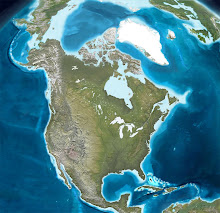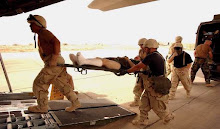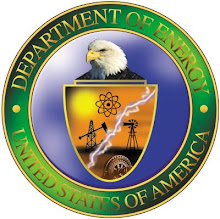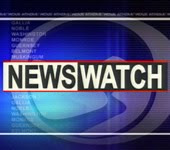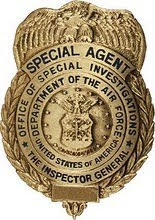By Steve Hammons
More information gathering and coordination of efforts are needed to respond to reports that U.S. Navy aircraft carrier strike groups have encountered UFOs at sea, according to a national security professional.
The headline of his article on The Hill website Nov. 2 says a lot: “The Navy acknowledges UFOs — so why aren't they on Washington's radar?” In the article, Christopher Mellon warns that a serious threat has possibly emerged and he urges government leaders, including those in Congress, to begin a robust response promptly.
Mellon has held positions in the Department of Defense related to intelligence, security and information activities, and was minority staff director of the Senate Select Committee on Intelligence.
He explains in his article that the recently-released video from Navy fighter jets is part of a much bigger story. Mellon writes, “In what could be a precursor to further stunning developments, the U.S. Navy has publicly acknowledged that the advanced aircraft depicted in several recently declassified gun-camera videos are UFOs, or what the Navy prefers to call ‘Unidentified Aerial Phenomenon’ (UAPs).”
Mellon plainly states that “bizarre vehicles” have “brazenly operated in restricted U.S. military airspace.” He says we have a situation “with ample warning lights flashing.”
‘UAP’ SITUATIONAL AWARENESS
Government officials and other leaders need to start taking this situation seriously, Mellon says. He asks, “Is the information too jarring and radical to process? Are U.S. government officials in denial?”
What’s worrying Mellon? He describes the highly unusual characteristics that these unknown objects or phenomena have reportedly demonstrated. “The vehicles observed and recorded by U.S. Navy fighter pilots seem impervious to altitude or the elements; they are able to maneuver above 80,000 feet,” he explained.
“They can hover and then instantly accelerate to supersonic and even hypersonic speeds; they have very low radar cross-sections and use a means of propulsion and control that does not appear to involve combustion, exhaust, rotors, wings or flaps.”
Mellon lays out the obvious problematic conclusion: “Since the Navy asserts these are not U.S. aircraft, we are confronted by the daunting prospect that a potential adversary of the United States has achieved the ability to render our most sophisticated aircraft and air defense systems obsolete.”
Although some members of Congress have received briefings on these incidents, the appropriate committees should begin addressing the situation now, Mellon tells us. He notes, “Some congressional oversight committees have asked for and received briefings, but none has held a hearing, either open or closed; none has appropriated funds for collection or analysis; none has even asked for a report or a threat assessment.”
And while politicians and officials in Washington remain under-informed about the seriousness of the situation, others are recognizing the potential danger. Mellon says, “I’ve interviewed numerous active-duty and retired military personnel who have encountered these mysterious vehicles. Without exception they express grave concern for their colleagues and near disbelief that our government is not reacting more vigorously.”
To put the current situation in context, Mellon compares it to other historical national security tragedies. “Indeed, examination of major US intelligence failures — from Pearl Harbor to the 9/11 terrorist attacks and Iraqi WMD — shows that, in each case, we had information that, properly analyzed and acted upon, could have prevented disaster. We’re at a similar place today, with ample warning lights flashing but no effective effort to pool relevant data from the myriad services and agencies that possess it.”
IMPROVED UNDERSTANDING NEEDED
Mellon advocates coordination of current information resources throughout the U.S. government to acquire more understanding of the phenomena – and if a threat to the U.S. exists.
He wrote, “Why are we not analyzing the vast quantities of data already collected by America’s vast sensor networks, already bought and paid for, to see what light that data might shed on the issue? Government paralysis is something we’ve grown accustomed to on domestic matters but, when it affects national security as well, we truly are a nation at risk.”
We should be gathering more information, conducting research and investigation, and putting together pieces of the puzzle regarding mysterious, highly-unusual objects and phenomena, Mellon states.
More specifically, he warns that, “The National Reconnaissance Office, Defense Intelligence Agency, CIA, Air Force and Navy, FBI and National Security Agency — there is no place in the U.S. government where all UAP information comes together. In that regard, the present situation is akin to counterterrorism before the establishment of the National Counterterrorism Center.”
No need to delay for funding issues, Mellon claims. “Thankfully, new military spending is not required; we simply need to implement an effective strategy for collection and analysis using existing resources,” he writes.
With regard to improved coordination, analysis and use of existing resources, does this include integrating research already conducted over past decades? Common sense tells us that serious investigation of the UFO phenomena by elements of the U.S. government probably began in the 1940s, particularly after World War II.
Because of national security and public safety concerns, a significant amount of information has probably already been acquired over the years. Would sharing this data more widely with the defense community, Congress and the American people be helpful or problematic? Or both?
(Related articles “Storytelling affects human biology, beliefs, behavior” and “Reagan’s 1987 UN speech on ‘alien threat’ resonates now” are posted on the CultureReady blog, Defense Language and National Security Education Office, Office of the Undersecretary of Defense for Personnel and Readiness, U.S. Department of Defense.)
skip to main |
skip to sidebar

In the past 30 days, readers from approximately 40 countries or territories using about 20 languages visited the Joint Recon Study Group site.

To see more articles, scroll down the right-side column.

Steve Hammons

Articles from the Joint Recon Study Group site and Transcendent TV & Media site are included.
The Joint Reconnaissance Study Group is the San Diego-based, combined-service/agency, research-and-activities team in my novels "Mission Into Light" and sequel "Light's Hand." This site contains information of interest to the JRSG.
Home page: Joint Recon Study Group site
Readers from around the world visit this site.

In the past 30 days, readers from approximately 40 countries or territories using about 20 languages visited the Joint Recon Study Group site.
April 2021 threat alert: ‘Force protection’ for our troops now the responsibility of all Americans
First responders must deal with society’s problems, shortcomings, injustices every day
Could some UFOs be linked to Native American 'white stone canoe' legends, stories?
Wildland firefighter basic training available at community colleges, tech schools, training centers
‘Boomer remover’ coronavirus is bigger threat to WWII generation that saved the world
‘Black swan’ events that aren’t: Coronavirus, climate emergency, unidentified aerial phenonema
Reagan’s complete 1987 UN message on ‘alien threat’ overlooked: Grave danger here, now
Was Reagan briefed about UFOs and original ‘Day the Earth Stood Still’ movie?
My military draft lottery number was #165 during final Vietnam War years
“Keep On The Sunny Side,” by The Whites, from movie O Brother, Where Art Thou?”
Living along Ohio River for centuries, Native Shawnee called it ‘Kiskepila Sepe’ – ‘Eagle River’
Native American words around us: States, towns, rivers, lakes, terrain, plants, animals, military
Athens County, Ohio, was key spot when colonists, Redcoats fought Shawnee in 1774 battle
1787 Northwest Ordinance set course for Ohio, Indiana, Illinois, Michigan, Wisconsin, Minnesota
Smallpox-tainted blankets were 1763 bioweapon on northern Appalachian Mountains frontier
Diana Krall performs “Maybe You’ll Be There" live in Paris with Paris Symphony Orchestra 2001.
Books to read in 2021? Novels "Mission Into Light" and the sequel "Light's Hand"
Novel excerpt: Renew, prepare America with ‘Urgent Response Group’ for teens, young adults
Diana Krall performs “I Get Along” live in Paris with Paris Symphony Orchestra 2001.
Steve Tyrell sings “Give Me the Simple Life.”
Diana Krall performs “Love Letters” live in Paris with Paris Symphony Orchestra 2001.
Visit the article archives!

To see more articles, scroll down the right-side column.
Novel "Mission Into Light" overview on Amazon
Novel "Light's Hand" overview on Amazon
Adventures of the Joint Recon Study Group: Overview and synopses of activities and operations
Key chapter overviews: Points of interest in the novel "Mission Into Light"
Key chapter overviews: Points of interest in the novel "Light's Hand"
Multimedia rights available
English and foreign-language book rights, audio book and e-book rights for "Mission Into Light" and "Light's Hand" are available. Movie and TV rights are available.
I'm seeking agent representation for these works and rights.
Please contact Steve Hammons for more information at hammons55@gmail.com.
Feature film screenplay
I completed a feature film screenplay in 2006 based on “Mission Into Light” and “Light’s Hand” combining key elements of both novels.
The screenplay takes audiences into the adventures and discoveries of the Joint Recon Study Group and the relationships among team members, friends and associates as they explore leading-edge research and emerging transcendent developments.
I'm seeking agent representation for this screenplay.
.........................
I also wrote a TV series pilot script based on "Mission Into Light" and "Light's Hand" story. I'm seeking agent representation this script.
About the Author

Steve Hammons
About the Author
I was born and raised in southwestern Ohio near the Kentucky and Indiana borders, then went to college at Ohio University in the southeastern Appalachian region of the state near West Virginia.
I graduated with a dual major in communication (journalism focus) and health education (psychology focus) with a minor in pre-law.
Ohio U. is home to the respected Scripps College of Communication and E.W. Scripps School of Journalism.
I also completed two graduate-level courses in guidance counseling theory and method at Ohio U.'s College of Education, School of Applied Behavioral Sciences and Educational Leadership.
At the end of my undergraduate education at Ohio University, I moved to the beautiful American Southwest where I applied my education, continual training and and ongoing experience to related professional fields such as health care, journalism and special research areas.
My novels "Mission Into Light" and the sequel "Light’s Hand" are available in e-book and 6"x9" paperback from most online booksellers worldwide.
Readers review metaphysical-military-intelligence adventure novel ‘Mission Into Light’
My articles on DoD CultureReady blog, Defense Language and National Security Education Office
Transcendent TV & Media site
Past articles: Scroll down the right-side column for more articles.

Articles from the Joint Recon Study Group site and Transcendent TV & Media site are included.




























